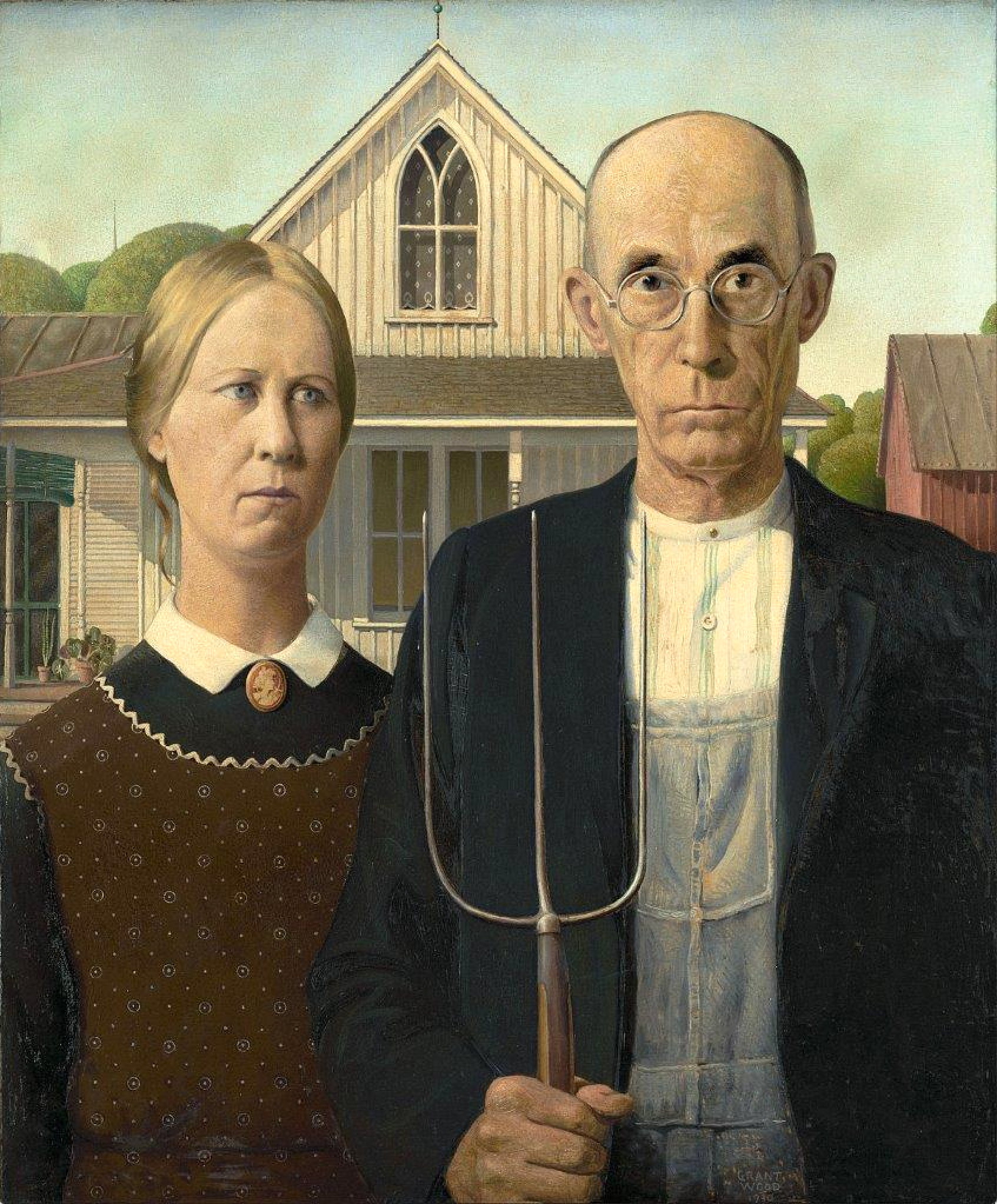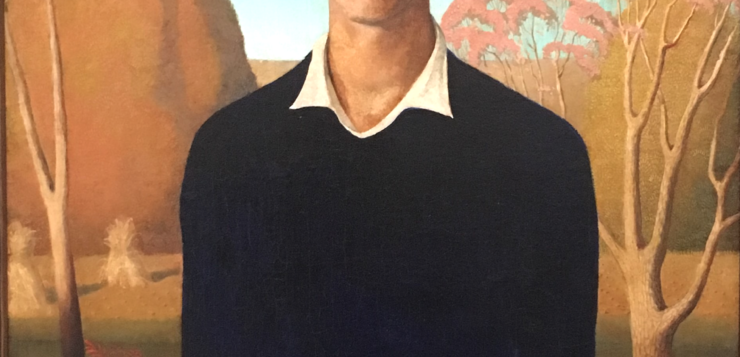WHEN ONE talks about the painter of American Gothic, Grant Wood (1891–1942), it’s easy to buy into the irresistible image he created of a homespun artist of rural America. But, just as in his archetypal painting, there’s much more than meets the eye. Having researched Wood for a decade, I’ve seen how publications and exhibitions tend to stick to the official version of his life, keeping him in the closet. This fable was finally blown to smithereens by a recent retrospective at the Whitney Museum, which dared to declare that “Wood’s homosexuality is the code that unlocks the truth to his art.” Here is the extraordinary story of the unconventional triangle between the iconic artist, his numerous male assistants, and Wood’s oppressive sister Nan (1899–1990), who posed for American Gothic and denied his sexuality until her death. Their tangled relationships ended up defining and transforming American art.
The seeds of Wood’s queer (in more ways than one) life were planted in his childhood. His father was a stern and unemotional Quaker who believed all artists to be sissies. His mother Hattie encouraged Wood’s creative abilities behind her husband’s back. Mortified by the fact that he looked nothing like his two brothers, Wood was thrilled when his sister Nan (for Nancy) was born and she looked just like him. This marked the beginning of Wood’s lifelong, unbreakable bond with his mother and his sister. While his brothers took after their father, Grant, who was pudgy and clumsy, rarely worked on their farm. Born right when the term “homosexuality” was first used in the U.S., Wood used his quirky sense of humor to navigate his challenging life. In his unfinished autobiography, filled with none-too-subtle homoerotic stories, he recalls a preacher pointing at him during a chilling sermon about Sodom and Gomorrah “just when he was daydreaming about joint snakes.”
 In 1916, after his father’s passing, Wood, Hattie, and Nan moved into a one-room shack in Cedar Rapids, the Iowa town that would become the center of his personal and artistic life. Wood became the surrogate head of the family with the scant income he received from jewelry designs and his work in a metalwork shop. In those days, the United States was considered a cultural backwater, but Wood was determined to become a reputable artist. He knew that studying in Europe was essential, so he proceeded to make four trips abroad throughout the 1920s, starting with France to study Impressionism. Chubby, shy, and with a bit of a Peter Pan complex, Wood was unable to use his only social tool, his wit, because he didn’t speak French. In Paris, he experienced gay culture for the first time in the company of fellow artist Marcel Bordet, whom he nearly brought home to mother. In those joyful days, he painted a large male nude, The Spotted Man, one of only two of his paintings that he kept until his death.
In 1916, after his father’s passing, Wood, Hattie, and Nan moved into a one-room shack in Cedar Rapids, the Iowa town that would become the center of his personal and artistic life. Wood became the surrogate head of the family with the scant income he received from jewelry designs and his work in a metalwork shop. In those days, the United States was considered a cultural backwater, but Wood was determined to become a reputable artist. He knew that studying in Europe was essential, so he proceeded to make four trips abroad throughout the 1920s, starting with France to study Impressionism. Chubby, shy, and with a bit of a Peter Pan complex, Wood was unable to use his only social tool, his wit, because he didn’t speak French. In Paris, he experienced gay culture for the first time in the company of fellow artist Marcel Bordet, whom he nearly brought home to mother. In those joyful days, he painted a large male nude, The Spotted Man, one of only two of his paintings that he kept until his death.
Back in Iowa, he told a friend “I guess I’m not interested in women,” and his life revolved around his devoted relationship to his mother and sister. Wood’s first art patron, David Turner, offered him a 975-square-foot hayloft behind his funeral home as a rent-free studio. Wood gladly accepted and, a true Renaissance man, designed furniture that could be stacked and concealed, creating an open studio that anticipated the design of today’s SoHo lofts.
Ignacio Darnaude, an art historian and film producer, is developing the docuseries Hiding in Plain Sight: Breaking the Queer Code in Art.







